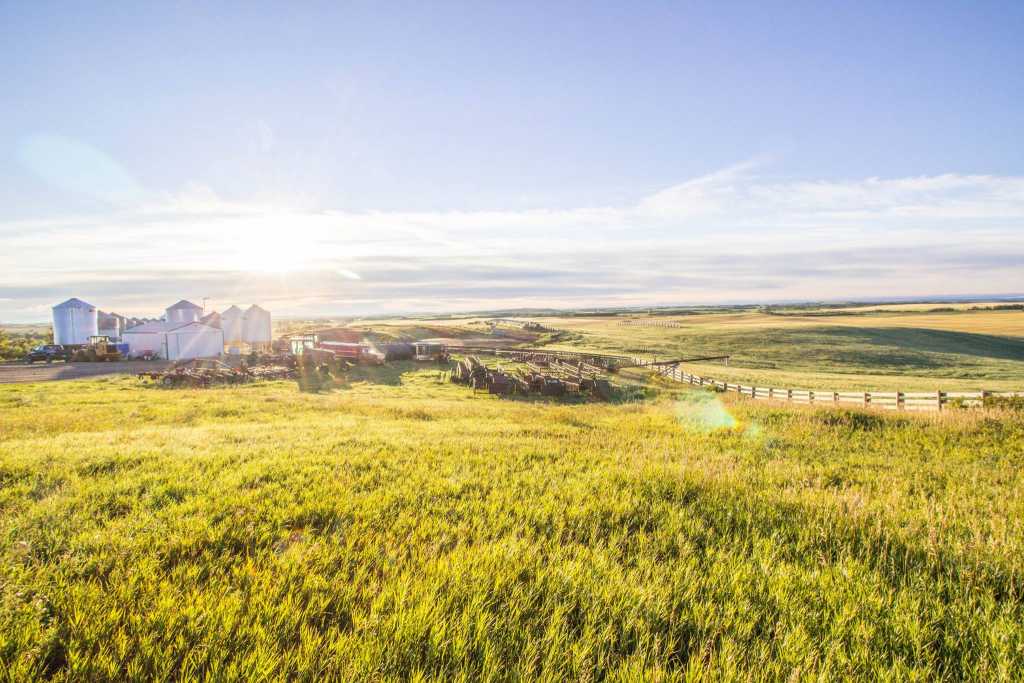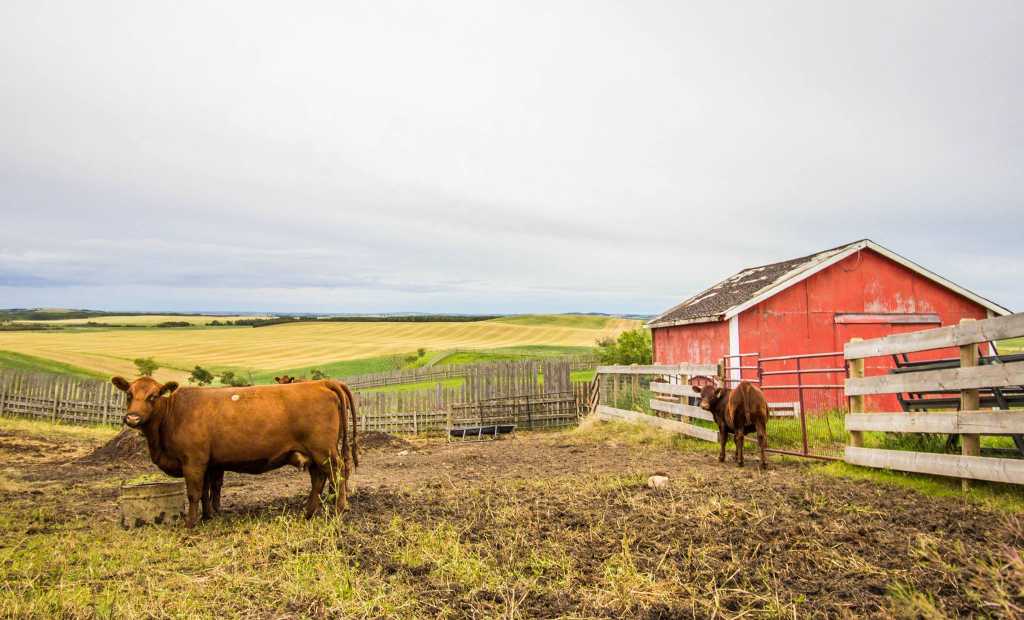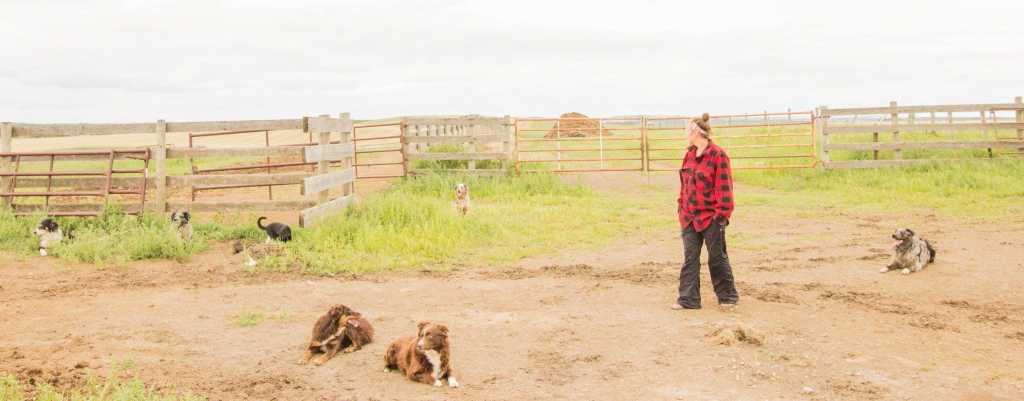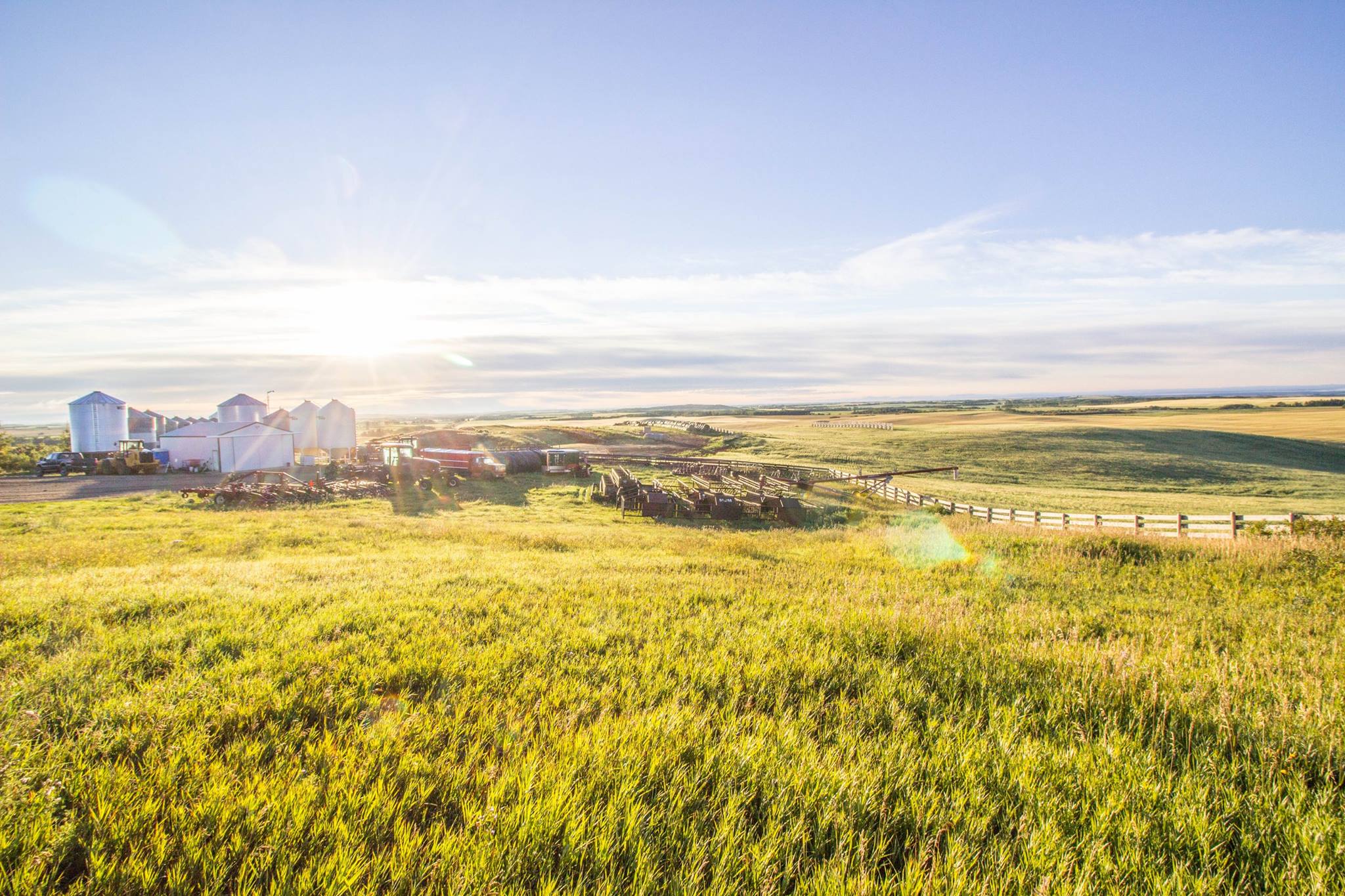Sarah has been a wonderful new voice for the working Aussie for a few years. A protege of Elvin Kopp, she has a systematic take, a great way of explaining the whole process, and an emphasis on relationship and putting in ground work that is unique among the trainer voices I’ve encountered.
She and her husband also have a purebred red Angus and sheep operation in Alberta, Canada. She does not let emotion or academics dictate the quality of a working dog – she puts in the time and if she doesn’t see a future for a dog in her program, she’s confident in making changes with her plans. Her dogs are tested, and while she’s successful in trials, she trains and breeds for using. She takes in dogs for training, primarily for ranchers, so she also has a unique outlook and approach. For all these reasons, I wanted to interview her about her methods and approaches with client dogs.

So, what do you do the first week or so you have a dog?
We’re working on the dog understanding my expectations. Understanding my correction, what behaviours are acceptable. Like scenting, marking, checking out other dogs, etc because once we start training if it’s ok outside of stock, there’s no reason it shouldn’t be allowed while working stock. And, they are behaviours used to release pressure. So he needs to know when/where he can scent/mark, definitely not during training.
Well, I’d be pretty mad if my dog did that when I was training him on stock.
That’s just it: everyone disapproves of that behaviour but allows the dogs to do it whenever/wherever outside of stock. They are linked.Its important for dogs to be dogs and for them to understand when it’s appropriate. Some handlers won’t run a bitch in season or complain when there is one because their male won’t focus.

So how do you do that? Take him out on leash, off leash . . . with other dogs? Without?
Depends on where the dog is at. It’s amazing how many dogs cannot simply go potty and have a drink without taking off and trying to entertain themselves. If they have a really hard time with their muzzle control (aka scenting the ground), I will chore them out one on one. You have to be careful if the other dog is responding to your correction but the dog you’re correcting isn’t. You can damage the confidence of the other dog.
What’s choring?
Tell them ok go pee/poop and let them empty out, go get water. Dog chores.
Okay, how often do you do this?
That’s every day and our broke dogs (trained) still do the same routine, but they get chored together. And let out longer, because they’ve earned responsibility they can be unsupervised or will come out with me to check sheep and wait at the gate. It’s the most important in the beginning stages of training. If I’m letting my dogs out I just want them to go out and do their business and come back when they’re done.

Why
not just start training them?
One
can go right to stock without lots of this but you still have to deal
with the relationship issue. Most struggle through it on stock, but
why not do it before stock and then the fight is reduced on stock.
But won’t the dogs be unhappy kenneled/crated all day long?
We keep our dogs out with us as much as possible. But if we are not able to stop what we’re doing to correct a habit we do not want to form, we put them up. It’s not harsh at all, dogs are den creatures by nature. We keep them in crates because in a kennel they can place, eye up cats, chase, bark, watch stock… all things that are detrimental to training. They can bully other dogs which can kill the confidence of the dog being bullied.
Dogs can bully in crates, too.
Yes less likely, especially when not right next to eachother or in line of sight. That’s why we have our kennels with solid partitions. I keep client dogs are in airline crates. The big set up is 3′ x 4′ per run (and elevated) and too big for most client dogs. Most that I get are barley leash broke compared to crate trained. Most also wouldn’t be comfortable to jump the 2.5′ into the kennel and I’m not interested in lifting a dog I don’t know into the kennel. So I keep them in a box stall right now so I can close the door in case a dog tries to bolt out of the kennel. If a dog did bully, he’d go into a separate area. No one is free and I don’t allow our dogs into the box stall or other dogs to go up to his kennel.
So when are you ready to go to stock with a dog?
When
they are capable of being
neutral when open
a
kennel. Instead of trying to rush out
and jump on me. And when
they don’t show resentment to correction. I can drop the leash and
chore without needing to use the leash. So responding to my recalls
and not blowing me off. This morning, your dog didn’t want to life
a leg when peeing, so he’s starting to think about marking less.
This is important before going to stock. Lifting a leg is okay and
some dogs are extremely strong markers so they need to know
when/where it is allowed.
Why is lifting a leg so
important to you?
Dominance.
Marking is about being top dog, marking territory. If a dog thinks
he’s claiming his territory, he thinks he is alpha. If he thinks
he’s alpha outside stock, he will think he’s alpha on stock. Thus
the relationship struggle with the dogs. I’ve seen dogs pee on
clinicians, pee on a fence then leave the arena, and even pee on
their owner.
When you say “correction” –
what do you mean? The growl you like to use to tell them not to do
something?
Yes, the growl, but it is always before the leash, even when I have the leash in hand. The dog needs to know he’s doing something wrong and that a touch/correction is coming or all you do is make a dog paranoid. Like, the dog won’t know why it’s being yanked on or touched with a stick. So they can get paranoid of feet and objects. Growling without an action isn’t bad, as long as the dog responds to the correction of it. If they don’t and there’s no action, the growl becomes null and void. I always give a dog time to respond or think. Otherwise they start waiting to be told what to do.
So how long does it take on average for you to feel like your relationship is established with a client dog before you go to stock?
Some I never get. I can only keep them as long as the client is willing to spend the money. Some just aren’t worth it. Some go home after a month and the owner expected a cow dog. It usually takes 2 weeks to start building that new/solid foundation and it takes approximately 21 days to change a habit. Others are harder and others are never broken. I will try what I can, because relationship is always a work in progress and I will use it as a reward for the dog trying. But, if they offer nothing on stock unless they get to have a free for all or they’re trying to kill sheep, I won’t put them on stock. There is nothing to accomplish until they get relationship figured out. The stock don’t come to the gate asking to be worked.
The main thing is some need more time than an owner is willing to spend. I keep doing what I can and try different things, but some dogs just don’t make it.
This is also dependent on what their habits are. If it’s a fresh dog with no previous stock exposure, I will more often than not take them to stock – either way, bad habits are being broken. That’s the goal.
Growl is always before the leash even when I have the leash in hand. The dog needs to know he’s doing something wrong and that a touch/correction is coming or all you do is make a dog paranoid.
So what about other household management? Especially with pet dogs?
Watch how your dog works without off stock. Is he comfortable coming into pressure. I think this is where it can be hard for dogs, especially in the beginning stages to be in the house, they can get pushy and we don’t realize the repercussions. Some dogs it’s not a big deal; others are happy to take advantage.
So what are we looking for?
The biggest thing, is neutral: if he’s neutral he won’t feel the need to protect. That is a good idea, as it will help with your end goal.
It’s simple things like making sure the dog moves out of your way when walking around the house. If not, then you might need to do more one on one with him until he earns the right for more responsibility.
And if he struggles in a certain area, that may be off limits. Also, no possessive type of behaviour. I take ownership of his food. They don’t get it until they give to me and makes eye contact.
So you stand there? You don’t feed in the crate?
Yes. I don’t mind if they go to their crate if they’re done eating as long as they don’t get possessive or guard and come out when called. Feed, stay with him, and if he leaves remove the food. They soon will eat in 10 minutes or less. If they can’t handle that, I would simply just close the crate, then when he’s in a better frame of mind, crate him.
This is a lot of things to manage.
At first all this will take a little but of time, but soon it won’t be an issue or you won’t even think about it. It just becomes a habit.





